Abstract
Twenty-five meat-and-bone meal samples were enriched with either selenite-cystine or tetrathionate and incubated for 1 and 2 days. Seven were previously found to be positive; of the other 18, 16 were positive for salmonella. The number of somatic serogroups per sample ranged from 1 to 11 with a mean of 3.8. Significantly more (P < 0.01) group C1 salmonellae were isolated using tetrathionate than selenite, whereas significantly more of groups G, 35, and Difco poly-valent D were isolated from selenite than tetrathionate. Seventy-six percent of the presumptive colonies from Brilliant Green agar showed a positive lysine decarboxylase reaction, and there were no differences between media or times of incubation. Ninety-four per cent of the lysine decarboxylase-positive cultures showed a positive somatic antiserum response; again there were no differences between times or enrichments although there were significantly more total positive serogroups at 2 days than at 1 day from tetrathionate but not from selenite. There were indications that certain serogroups preferred either one or the other enrichment. There were no differences in total positive samples with the two enrichments although neither alone was sufficient to identify all positives. Several lactose-positive salmonellae were recovered.
Full text
PDF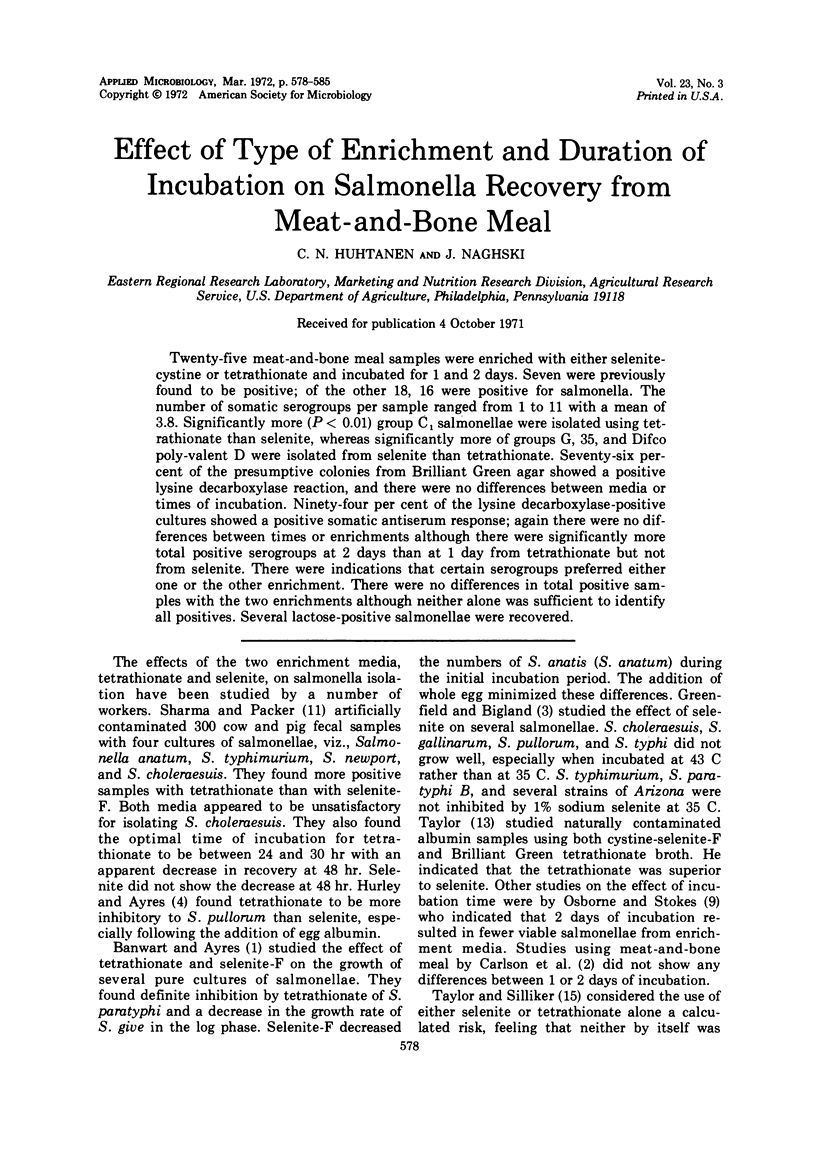
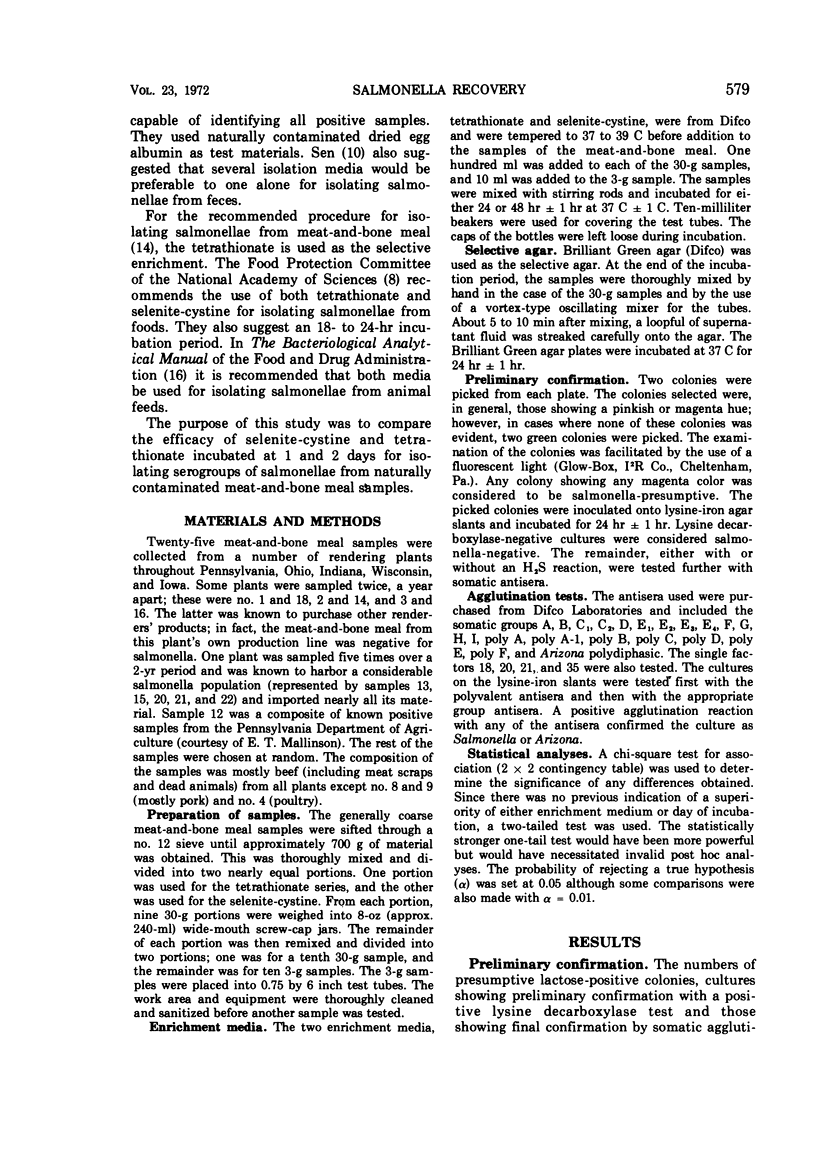
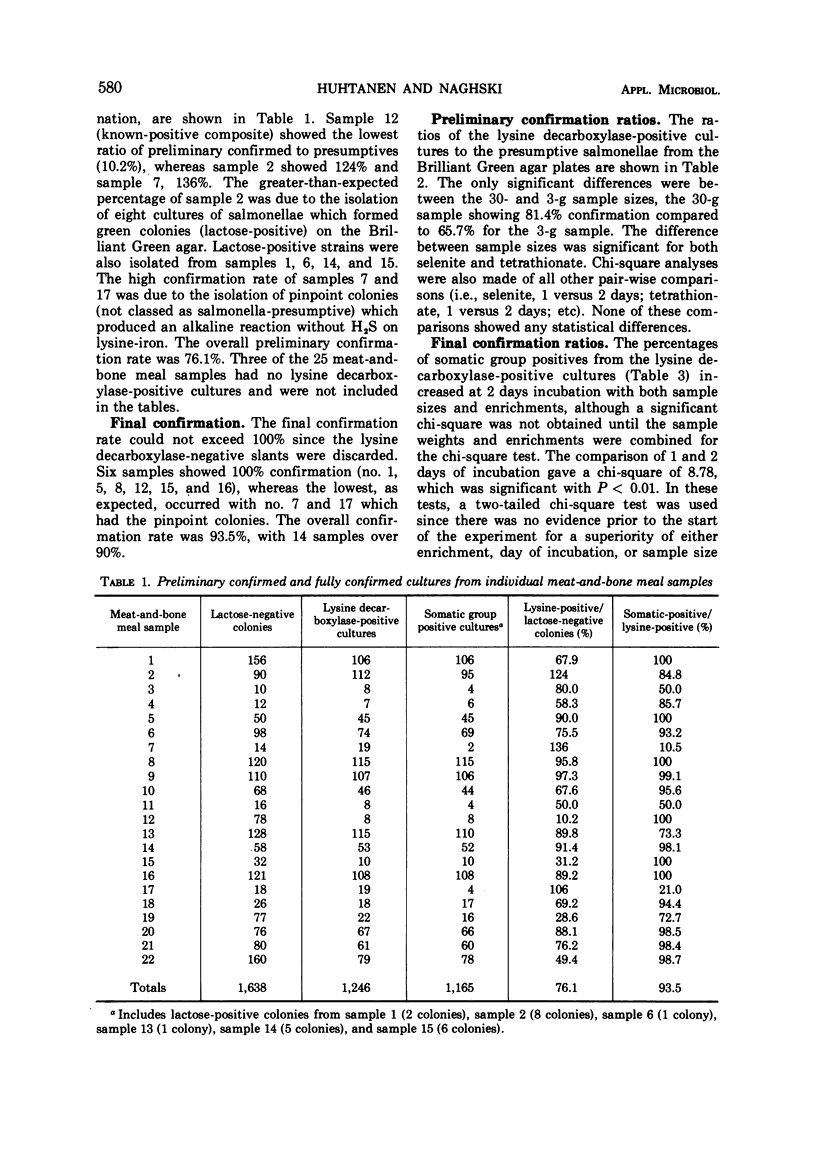
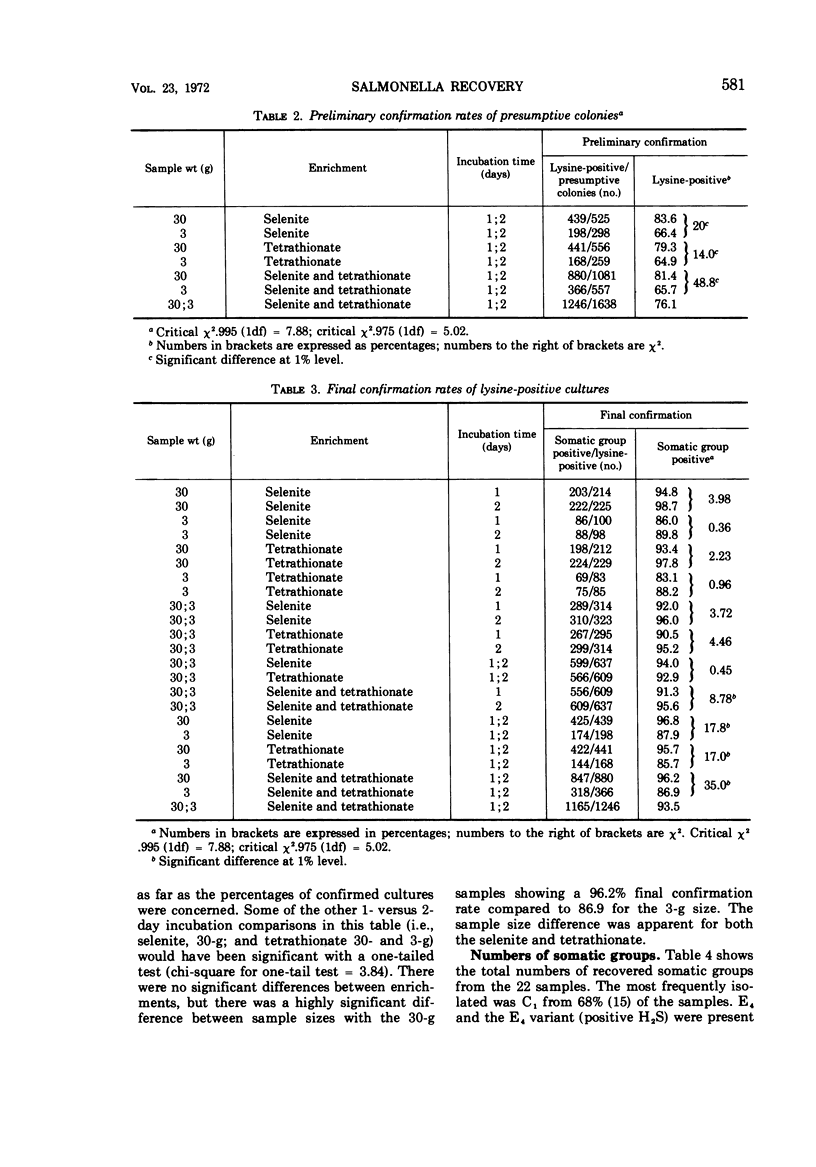
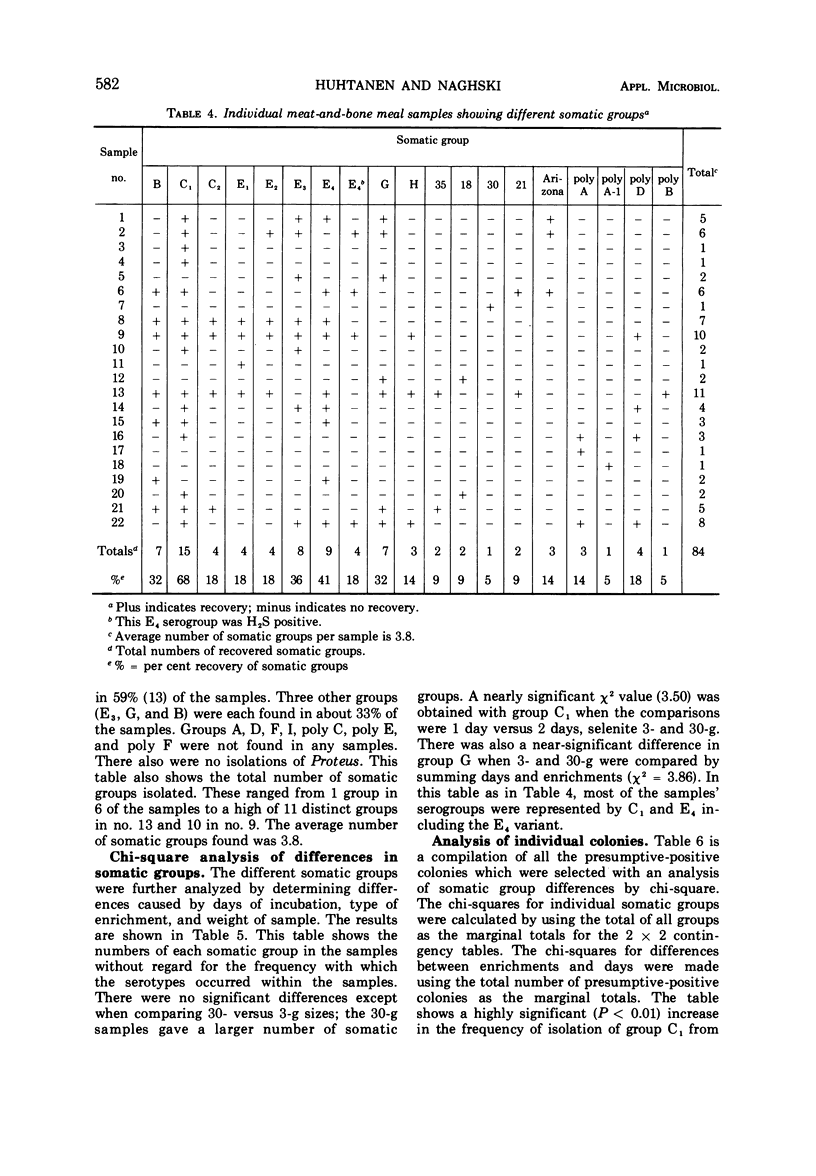
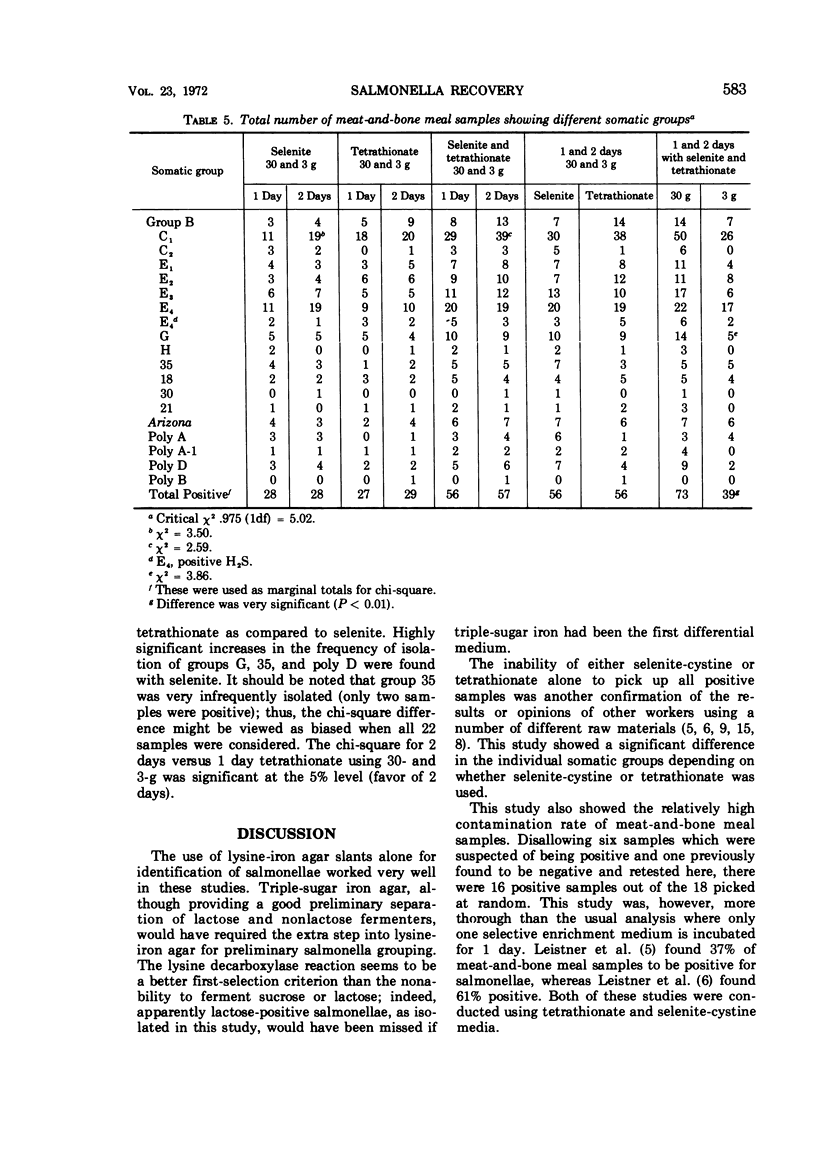
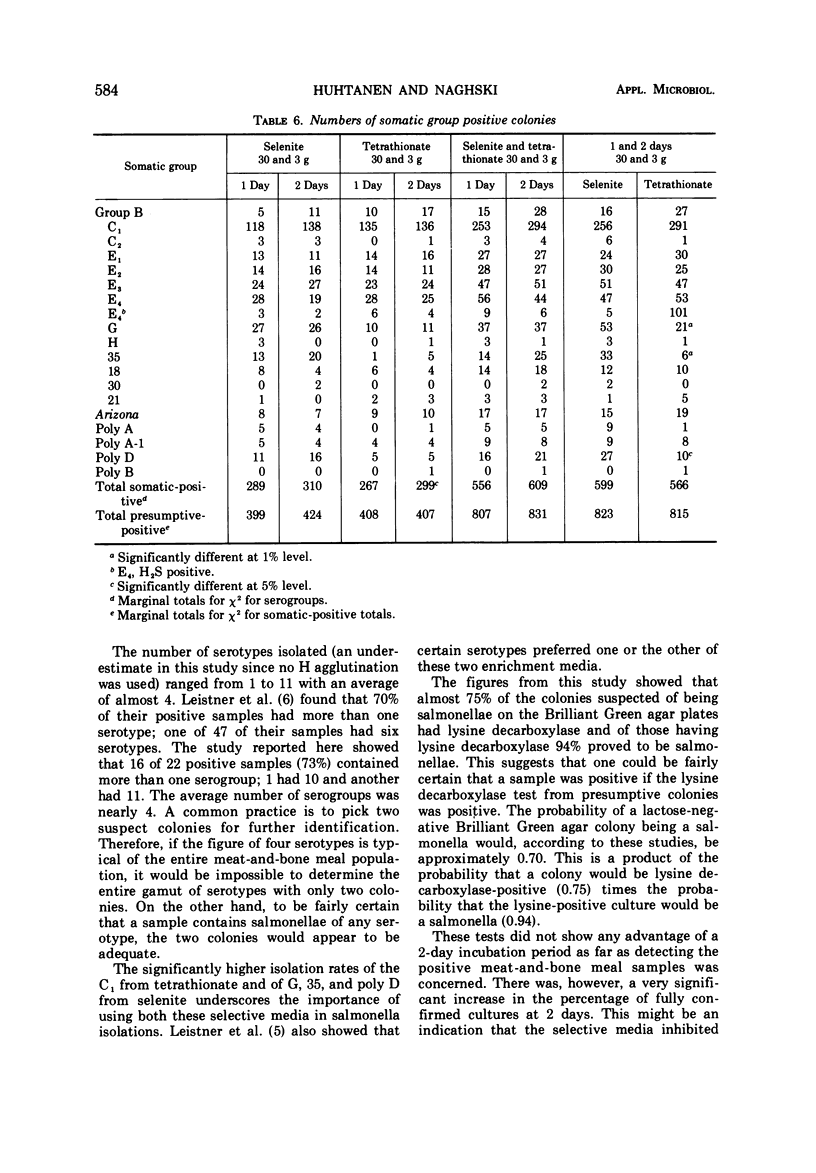
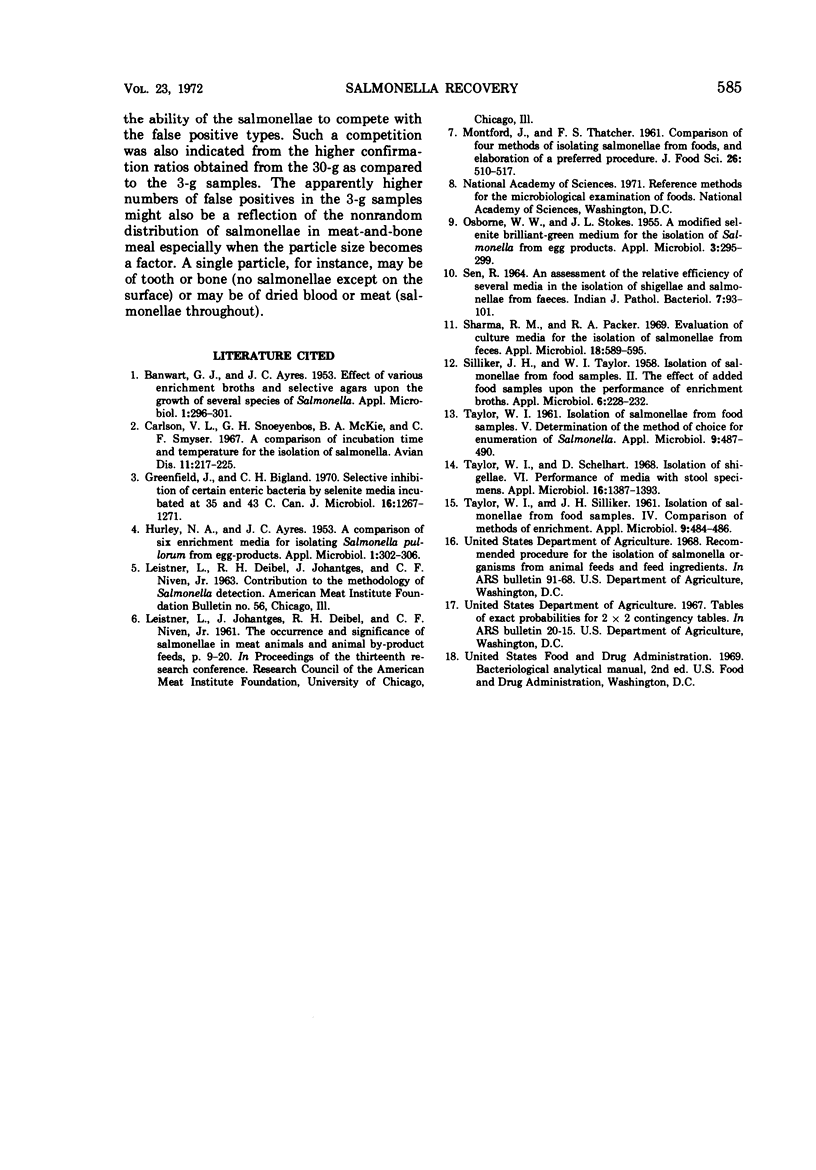
Selected References
These references are in PubMed. This may not be the complete list of references from this article.
- BANWART G. J., AYRES J. C. Effect of various enrichment broths and selective agars upon the growth of several species of Salmonella. Appl Microbiol. 1953 Nov;1(6):296–301. doi: 10.1128/am.1.6.296-301.1953. [DOI] [PMC free article] [PubMed] [Google Scholar]
- Carlson V. L., Snoeyenbos G. H., McKie B. A., Smyser C. F. A comparison of incubation time and temperature for the isolation of salmonella. Avian Dis. 1967 May;11(2):217–225. [PubMed] [Google Scholar]
- Greenfield J., Bigland C. H. Selective inhibition of certain enteric bacteria by selenite media incubated at 35 and 43 C. Can J Microbiol. 1970 Dec;16(12):1267–1271. doi: 10.1139/m70-212. [DOI] [PubMed] [Google Scholar]
- HURLEY N. A., AYRES J. C. A comparison of six enrichment media for isolating Salmonella pullorum from egg-products. Appl Microbiol. 1953 Nov;1(6):302–306. doi: 10.1128/am.1.6.302-306.1953. [DOI] [PMC free article] [PubMed] [Google Scholar]
- OSBORNE W. W., STOKES J. L. A modified selenite brilliant-green medium for the isolation of Salmonella from egg products. Appl Microbiol. 1955 Sep;3(5):295–299. doi: 10.1128/am.3.5.295-299.1955. [DOI] [PMC free article] [PubMed] [Google Scholar]
- SEN R. AN ASSESSMENT OF THE RELATIVE EFFICIENCY OF SEVERAL MEDIA IN THE ISOLATION OF SHIGELLAE AND SALMONELLAE FROM FAECES. Indian J Pathol Bacteriol. 1964 Apr;55:93–101. [PubMed] [Google Scholar]
- SILLIKER J. H., TAYLOR W. I. Isolation of salmonellae from food samples. II. The effect of added food samples upon the performance of enrichment broths. Appl Microbiol. 1958 Jul;6(4):228–232. doi: 10.1128/am.6.4.228-232.1958. [DOI] [PMC free article] [PubMed] [Google Scholar]
- Sharma R. M., Packer R. A. Evaluation of culture media for the isolation of Salmonellae from feces. Appl Microbiol. 1969 Oct;18(4):589–595. doi: 10.1128/am.18.4.589-595.1969. [DOI] [PMC free article] [PubMed] [Google Scholar]
- TAYLOR W. I. Isolation of Salmonellae from food samples. V. Determination of the method of choice for enumeration of Salmonella. Appl Microbiol. 1961 Nov;9:487–490. doi: 10.1128/am.9.6.487-490.1961. [DOI] [PMC free article] [PubMed] [Google Scholar]
- TAYLOR W. I., SILLIKER J. H. Isolation of Salmonellae from food samples. IV. Comparison of methods of enrichment. Appl Microbiol. 1961 Nov;9:484–486. doi: 10.1128/am.9.6.484-486.1961. [DOI] [PMC free article] [PubMed] [Google Scholar]
- Taylor W. I., Schelhart D. Isolation of shigellae. VI. Performance of media with stool speciments. Appl Microbiol. 1968 Sep;16(9):1387–1393. doi: 10.1128/am.16.9.1387-1393.1968. [DOI] [PMC free article] [PubMed] [Google Scholar]


